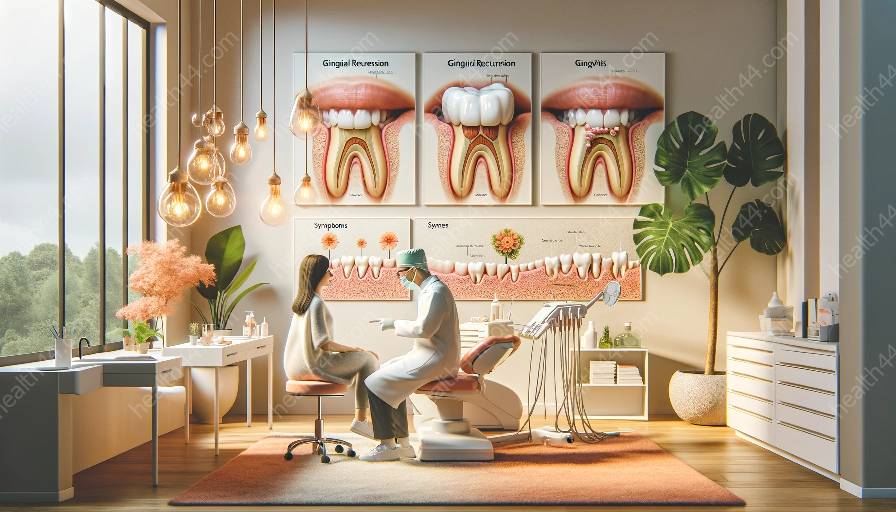Gingival recession, commonly known as receding gums, is a common oral health issue that occurs when the gum tissue pulls back or wears away from the tooth, exposing the tooth root. This condition can lead to sensitivity, aesthetic concerns, and even tooth loss if left untreated. Understanding the main causes of gingival recession and their connection to gingivitis is crucial for maintaining good oral health.
Lifestyle Factors
Several lifestyle habits can contribute to gingival recession. The most common factor is aggressive tooth brushing, which can wear down the enamel and gum tissue over time. Additionally, using a hard-bristled toothbrush and applying excessive force while brushing can accelerate gum recession. Other lifestyle factors such as tobacco use, particularly smoking, can also increase the risk of developing receding gums due to reduced blood flow to the gum tissues.
Genetics
Genetics play a significant role in determining an individual's susceptibility to gingival recession. Some people inherit thin or fragile gum tissue, which is more prone to recession. Inherited structural defects in the teeth or jawbone can also contribute to gum recession, as they may affect the positioning of the gums around the teeth.
Dental Conditions
Several dental conditions can directly or indirectly lead to gingival recession. Periodontal diseases, such as gingivitis and periodontitis, are major contributors to gum recession. Gingivitis, in particular, is an early stage of gum disease characterized by inflammation of the gums, which, if left untreated, can progress to periodontitis and cause the gums to recede. Other dental conditions, such as misaligned teeth or improper dental restorations, can also contribute to gum recession by exerting excessive pressure on the gums or affecting the distribution of forces during biting and chewing.
Malocclusion
Misalignment of the teeth, also known as malocclusion, can lead to gingival recession. When the teeth are not properly aligned, excessive force can be exerted on specific areas of the gums during biting and chewing, leading to gum tissue displacement and recession. This is particularly common in individuals with crowded or crooked teeth, as well as those with significant overbites or underbites.
Bruxism and Clenching
Bruxism, the habitual grinding or clenching of teeth, can contribute to gingival recession by applying excessive pressure on the teeth and gums. The repetitive motion and force associated with bruxism can accelerate gum tissue wear and lead to recession over time. Similarly, habitual clenching of the jaw can exert pressure on the gums, contributing to the development of receding gums.
Age and Hormonal Changes
As individuals age, natural changes in the gum tissue may occur, making them more susceptible to recession. Additionally, hormonal changes, such as those experienced during puberty, pregnancy, and menopause, can affect the gum tissues and increase the risk of gingival recession. Hormonal fluctuations can lead to changes in blood circulation and immune response, potentially impacting the health and integrity of the gums.
Conclusion
Understanding the main causes of gingival recession is crucial for preventive oral care and early intervention. By addressing lifestyle factors, seeking timely dental treatment, and maintaining good oral hygiene practices, individuals can reduce the risk of developing receding gums and prevent the progression of gingival recession. Regular dental check-ups, professional cleanings, and a proactive approach to oral health can significantly contribute to maintaining healthy gums and overall well-being.













